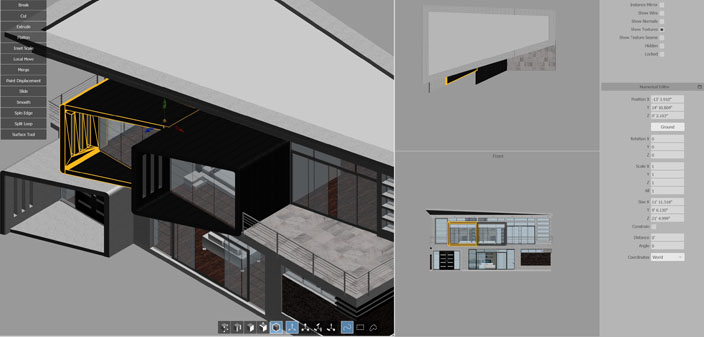Nevercenter, a developer of 3D graphics, photo editing, color grading, writing, and pixel art software, has recently launched a new Real-time Renderer and VR Viewer, Milo, as well as a major update to its 3D modeler, Silo.
As a lightweight, and easy-to-use 3D polygonal modeler and UV mapper, Silo works best for both hard surface and organic modeling for characters, product design, architecture, and more. Silo includes streamlined versions of all the industry-standard modeling tools you need, provides an intuitive UV workflow using features like live LSCM unwrapping, and, with GoZ support, it is ideal for modeling base meshes for ZBrush. Either used standalone or as a companion upgrade for complex all-in-one tools like Maya or Blender, it is also a great tool for teaching and learning 3D modeling. In the latest major update, Nevercenter added new features, including blend shapes for auto-generating random variations of a model, variable SubD edge creasing, and PBR materials setup.
Currently in Early Access and powered by the Unreal Engine, Milo offers a new way to view, explore, light, render, and generally show off 3D models and designs, including in VR with a simple click of a button. Nevercenter was awarded Epic Games’ Mega Grant to aid in Milo’s development, “due to its innovative use of the industry-leading Unreal Engine for hyper-realistic lighting, materials, shadows, and effects”. The company claims it is the “ideal tool for product shots, game asset visualization, ArchViz/architectural walkthroughs, portfolio renders, and VR previews”. It features a variety of lighting rigs with many real-time light sources, instant turntable renders to create animated gifs, and tools to easily produce architectural renders and interactive walkthroughs.
While both are standalone tools, Silo and Milo work best together. With both tools, users can iterate incredibly quickly by modeling in Silo and using Milo for renders. Also, by editing a file in Silo and hitting save, it will auto-reload the changes in Milo.
“For example, an architect could update a 3D building design using Silo’s precise desktop interface while a client views the changes seamlessly inside a VR headset,” Nevercenter wrote. “Together, Silo and Milo make it possible to model, texture map, and render complete scenes and images, and fit in seamlessly in a larger workflow.”
Nevercenter is offering Milo for free with a purchase of Silo, which is available right now for macOS and Windows through a 7-day free trial, or at an affordable price of $149. Buying Silo gives users permanent access to the purchased version and includes a year of free updates. After that, users can purchase another year for half price (if purchased within 90 days of expiring) to get access to further updates.






